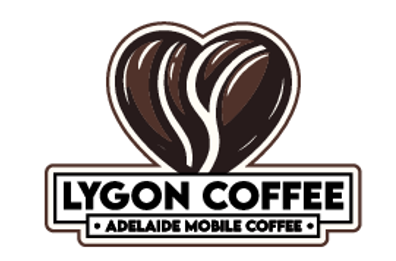Many bloggers overlook the importance of crafting effective SEO meta descriptions, which play a significant role in enhancing your blog visibility. By optimizing these descriptions, you can improve your click-through rates and attract a more targeted audience. This post will guide you through the process of creating compelling meta descriptions tailored to each title, ensuring that your content is not only engaging but also blog-ready for better search engine performance.
Unpacking the Importance of SEO Meta Descriptions
SEO meta descriptions serve as concise summaries of your web pages, directly influencing user engagement and search visibility. While search engines may not factor them into ranking algorithms, they act as persuasive elements that can enhance your content’s appeal in search results. A compelling meta description not only reflects the essence of your content but also captures the attention of potential readers, leading to higher engagement rates. Crafting well-thought-out meta descriptions is an necessary component of any SEO strategy that directly affects your site’s performance.
The Role of Meta Descriptions in Search Rankings
While meta descriptions do not directly affect search rankings, they play a pivotal role in how your content is perceived in SERPs. Search engines aim to deliver the most relevant results to users, and an optimized meta description signals the relevance of your page. By using targeted keywords and aligning with user intent, you enhance the likelihood of your content being clicked on, indirectly supporting your page’s position in search results.
How Meta Descriptions Influence Click-Through Rates
Meta descriptions significantly impact click-through rates (CTRs) as they provide the first impression potential visitors have of your content. A well-crafted description acts as a marketing hook; it can make your page stand out amidst a myriad of search results. Research shows that pages with compelling meta descriptions typically experience higher CTRs, often exceeding 5% compared to less engaging snippets. The difference may come from using action-oriented language, posing a question, or clearly outlining the value users will find on your page.
Enhancing your meta descriptions involves experimenting with different styles and formats to see what resonates with your audience. For instance, including numbers or statistics can attract attention, as people are drawn to quantifiable information. Additionally, incorporating a sense of urgency or exclusivity can motivate users to click. Testing variations across multiple pages allows you to gather data on what phrases or structures yield the highest engagement, fine-tuning your strategy for maximum impact.
Crafting Compelling Meta Descriptions with Purpose
Meta descriptions serve as your website’s storefront window, enticing users to click through to your content. With an ideal length of 150 to 160 characters, a well-crafted meta description summarizes your article while incorporating relevant keywords. Focus on creating a sense of urgency and value that aligns with user queries, ensuring your content stands out in search results.
Key Elements of an Effective Meta Description
An effective meta description contains specific elements: targeted keywords, a clear summary of the content, and a call to action. Keywords help search engines understand the topic, while a concise summary engages users. Including phrases that evoke action, like “discover,” “learn,” or “explore,” encourages clicks and increases your visibility in search results.
Tailoring Descriptions to Match Content and Audience Intent
Aligning your meta descriptions with the intent of your audience enhances the chances of engagement. By understanding what motivates your target readers, you can customize the message to meet their needs. For instance, a user searching for “best SEO tools” seeks actionable insights, so your description should promise informative content that delivers on that expectation.
To effectively tailor your meta descriptions, analyze search intent through keyword research. Look for keywords that reflect users’ questions or needs, and craft descriptions that directly address these. For example, if data reveals users are seeking comparisons between similar products, highlight that aspect in your meta description. This approach not only increases click-through rates but also builds trust with your audience by setting accurate expectations.
Tactical Steps for Creating SEO-Ready Titles
Creating SEO-ready titles involves a blend of creativity and strategic thinking. Your titles should not only grab attention but also seamlessly integrate keywords that your target audience is searching for. Focus on brevity and clarity, ensuring that the title reflects the content accurately while also enticing clicks. A balance between catchiness and informative value will enhance your content’s visibility on search engines.
Aligning Titles with SEO Best Practices
Your titles should follow SEO best practices by being clear and concise. Aim for a length of 50-60 characters to prevent truncation in search results. Include primary keywords at the beginning for better indexing. Utilizing actionable language can also improve click-through rates and engagement.
Incorporating Keywords Without Sacrificing Readability
Seamless keyword integration boosts your title’s SEO potential while keeping it engaging. Position keywords naturally within your title without forcing them, as this maintains readability. Aim for phrasing that flows well and evokes curiosity, prompting users to click on your content.
Using tools like Google Keyword Planner or SEMrush can guide you in identifying high-traffic keywords relevant to your topic. For instance, if your focus is on digital marketing, instead of simply stating “Digital Marketing Tips,” try “Top 10 Digital Marketing Tips to Boost Your Online Presence.” This approach not only incorporates keywords effectively but also makes the title more appealing and informative, aligning with both SEO and reader interests. Bear in mind, your goal is to create a title that resonates with both the algorithm and your audience.

Real-World Examples: Meta Descriptions That Work
Analyzing effective meta descriptions highlights their role in improving click-through rates. Successful examples often feature targeted keywords, engage readers with a clear value proposition, and use action-oriented language. By studying how major brands craft their descriptions, you can identify best practices and adapt them for your content. Look for patterns in length, tone, and the inclusion of questions or calls-to-action that drive engagement.
Analyzing Successful Blog Titles and Their Descriptions
Reviewing top-performing blog titles alongside their descriptions reveals common strategies that resonate with audiences. Effective titles are often clear and specific, indicating the post’s value while intriguing potential readers. The accompanying descriptions complement this by providing further context and enticing users with promises of actionable insights, compelling stories, or solutions to common problems.
Learning from Mistakes: What Not to Do
Avoiding common pitfalls is crucial for optimizing your meta descriptions and titles. Lengthy, vague, or overly complex descriptions can confuse readers rather than attract them. Keywords must be used strategically; stuffing them into your descriptions compromises readability. Additionally, failing to accurately represent your content can lead to high bounce rates and diminished trust in your brand.
Focusing on concise and meaningful descriptions is imperative. Descriptions exceeding the recommended 155-160 characters often get truncated, losing vital information. Misleading descriptions can also deter clicks, as readers may feel misled upon arrival. For example, a title like “Effective SEO Tips” with a description that promises unmatched results without substance risks disappointing your audience. Learning from these mistakes cultivates a stronger approach to crafting engaging and effective titles and descriptions.
The Future of SEO: Trends and Predictions
The landscape of SEO is evolving rapidly, with new technologies and user behaviors shaping how search engines function. You’ll want to stay ahead by understanding upcoming trends, such as the rise of voice search and the growing importance of user experience signals. As these elements become integrated into search algorithms, adapting your strategies accordingly will be crucial for maintaining visibility and relevance in organic search results.
Emerging Trends in Meta Description Optimization
Emerging trends in meta description optimization focus on tailoring descriptions to user intent and enhancing engagement. The integration of structured data and rich snippets can set your content apart, making it more attractive in search results. Innovative approaches, such as leveraging emotional triggers or incorporating questions, can significantly increase click-through rates and improve overall SEO performance.
Anticipating Changes in Search Engine Algorithms
Search engine algorithms are in a constant state of flux, regularly updated to better meet user needs. Your ability to adapt to these changes is key. Factors such as mobile-first indexing and the implementation of AI technologies like BERT mean that you must optimize content for search intent and conversational queries. Keeping abreast of these shifts will help you create content that remains relevant and highly ranked.
In 2022, Google confirmed that user engagement metrics—such as dwell time and click-through rates—will increasingly influence rankings. For instance, leveraging AI tools like Jasper can enhance your content’s relevance and style, ensuring it aligns with conversational search queries. As search engines move towards natural language processing, creating high-quality, contextual content that addresses user questions becomes paramount; this means focusing not just on keywords, but on the value you provide to your readers.
Conclusion
As a reminder, suggesting SEO meta descriptions for each title enhances your blog’s visibility and click-through rates. Crafting effective meta descriptions is imperative for informing potential readers about your content while incorporating relevant keywords. By optimizing these descriptions, you significantly improve your chances of attracting and engaging your target audience. Implementing this strategy helps ensure your blog is not only informative but also stands out in search engine results, ultimately driving more traffic to your site.
FAQ
Q: What is the purpose of SEO meta descriptions?
A: SEO meta descriptions provide a brief summary of a webpage’s content, helping search engines and users understand what to expect. They can influence click-through rates from search engine results.
Q: How do SEO meta descriptions impact search engine rankings?
A: While meta descriptions do not directly affect rankings, a compelling description can increase click-through rates, which may contribute to improved rankings over time.
Q: What should be included in an effective SEO meta description?
A: An effective SEO meta description should be concise, typically between 150-160 characters, include relevant keywords, and provide a clear and enticing summary of the content.
Q: Can I use the same SEO meta description for different blog posts?
A: No, each blog post should have a unique SEO meta description that accurately reflects its content to avoid confusion for search engines and users.
Q: How often should I update my SEO meta descriptions?
A: SEO meta descriptions should be updated whenever significant changes are made to the content of a blog post or if analytics show that a different description could improve performance.

